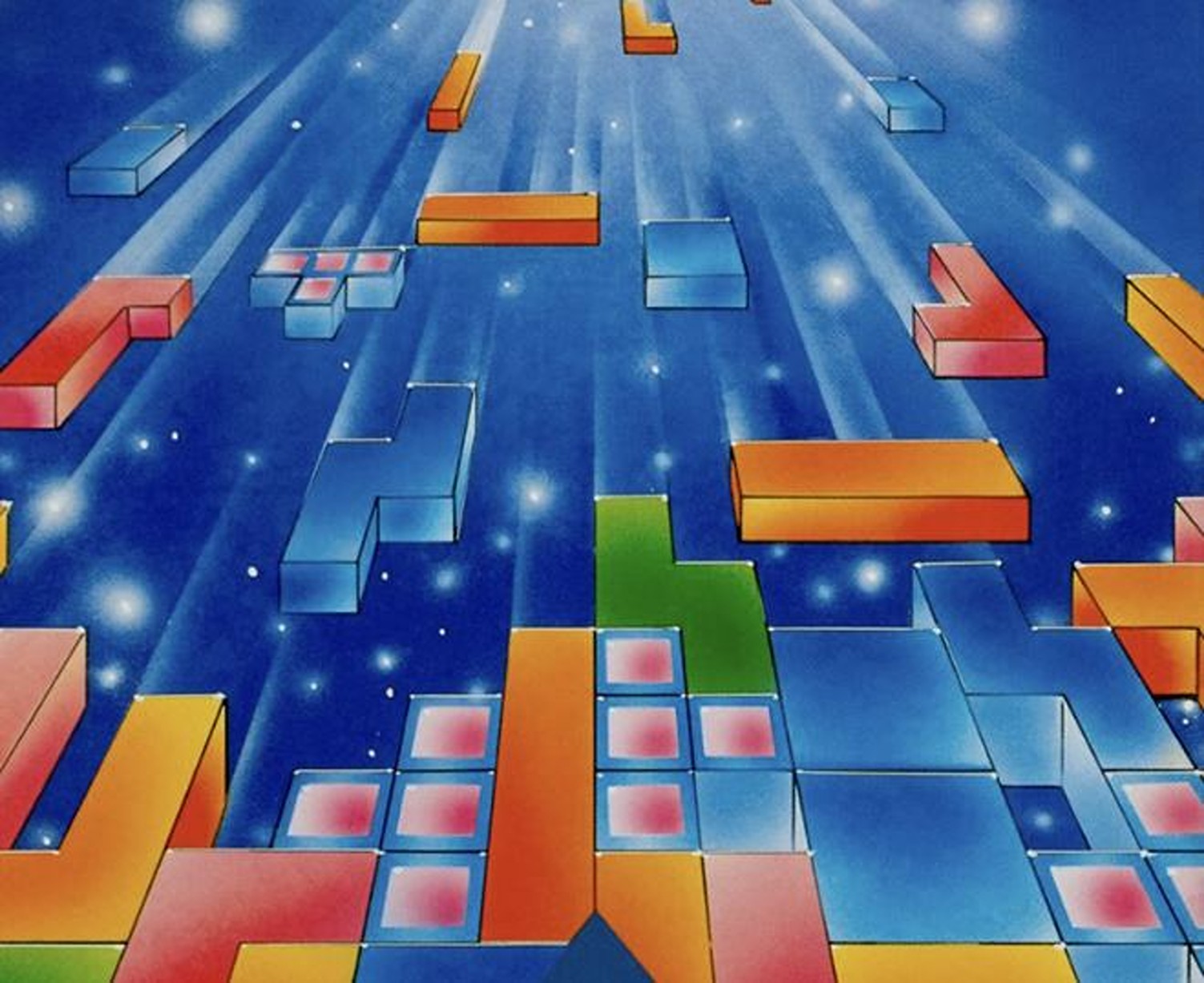
13-year-old Willis Gibson made headlines recently by effectively beating the NES version of Tetris. While highly skilled Tetris players have long been widely respected in the speedrunning and competitive gaming communities, Gibson’s recent accomplishment is seen as an especially significant gaming milestone. Not only is he the first person to beat that version of Tetris, but it was previously believed that it would be physically impossible for a human being to ever beat that game.
While it’s easy enough to use words like “impossible” and “first” to explain why this event is so impressive, those words fall short of really capturing the scope of Gibson’s accomplishment. To help understand that, you first have to know a little more about what made beating this version of Tetris seemingly impossible in the first place and how, exactly, Gibson made the seemingly impossible happen.
First off, what Gibson beat was the “A-Type” mode of the NES version of Tetris. The A-Type mode requires players to clear 29 levels of play. At various intervals past Level 10, the game speeds up and raises the difficulty level in the process. If you’ve ever played pretty much any version of Tetris ever released, you’re likely familiar with that basic concept and what makes it generally challenging.
However, only those who have played the NES version of Tetris know what makes that version so special in terms of its overall difficulty. See, past Level 19, A-Type play becomes exceedingly difficult for all but the best NES Tetris players. At Level 29, though. things become truly absurd.
When you reach Level 29, the game starts dropping blocks at a speed of about 1 grid per frame. So even if you reach that level with an empty board (which is unlikely) pieces will start falling faster than most people could likely process their shape and position. More than just another example of “NES Hard,” that absurd difficulty spike was implemented to help ensure that players could not reach the point where the game would no longer be able to process new information and would simply crash. Reaching that “crash point” is considered to be the equivalent of beating the game.
How long does it take to reach the crash point in the NES version of Tetris? Well, while you’re supposed to stop playing at Level 29, you can continue playing beyond that point as long as you don’t reach the vertical limit of the board. The game won’t keep track of those new levels on-screen, but they exist within their own parameters. Until very recently, the top Tetris players in the world made it to what is essentially the equivalent of Level 148 without crashing the game. Mind you, Level 148 was the record as of late last year, and it took decades for a single player to even reach that point.
But what makes that specific version of Tetris so difficult? Well, even if you are one of those rare Tetris players who can “look ahead” quickly enough to complete a proper move in a frame’s worth of time, physically doing so with an NES controller is another matter entirely. There is a natural input delay between the NES controller and what happens on-screen that long thwarted even the best Tetris players from making it too far beyond the intended Level 29 cutoff point. Again, we’re talking frames of input delay vs. frames of an available input window. At some point, it’s not about how good you are but rather the simple limitations of the scenario you’re playing within.
Not long ago, though, players began to minimize the impact of that delay through a technique known as “hypertapping.” As the name suggests, hypertapping involves pressing the NES D-pad multiple times in rapid succession to expedite horizontal block movements. It’s a physically demanding style of play made all the more difficult by the fact that the demanding physicality of the inputs must be combined with the mental strain of playing Tetris at this level. Indeed, it wasn’t until 2016 when then-16-year-old Joseph Saelee won the Tetris World Championship using that technique that more players began to accept that the effort that went into hypertapping was worth the results. Still, even the best hypertapping players couldn’t beat A-Type through that technique alone.
That’s where the “rolling” technique comes in. Essentially an improved version of hypertapping, the rolling technique involves applying pressure to the back of the NES controller while performing a modified hypertapping technique. While it’s physically less straining than hypertapping and can produce much greater results, it is still a challenging and awkward (at least for many) way to play Tetris. Besides, you can’t even really properly practice the rolling technique until you get to the speeds of play that it was designed for. By, that point, you have to essentially master the technique frame-by-frame just to keep up with the natural technical limits the game imposes.
And that’s the heart of why this challenge was still considered to be impossible despite such input technique improvements. Even if you are one of the rare players who can master the rolling or hypertapping techniques at a professional level, much of that work is simply going into circumventing the natural restrictions imposed by the game. You still have to use those techniques to not only move pieces faster than most players can even visually process them but also do so while the game is changing the shades of those blocks in ways that force you to constantly recalibrate your eyes.
You also have to consider that reaching the game’s crash point requires you to do all of that for a prolonged period that is bound to physically and mentally fatigue the majority of human beings no matter how good they are at Tetris. That’s why reaching the true kill screen in the NES version of Tetris had previously only been accomplished by AI programs.
As if that wasn’t enough, those AI programs revealed yet another factor that made this challenge so absurd. See, it turns out that you not only need to reach what is essentially Level 155 to crash the game, but you need to complete a specific type of line clear at that point to do so. If you do not complete a specific line clear at that point (a factor you have little control over at that time), you must continue playing until you reach the possible crash conditions of subsequent levels. So, not only would the best Tetris players in the world have to push themselves even further to reach the Level 155 mark, but they needed to complete specific types of clears at that point in the game to ever actually see the true kill screen. Otherwise, they could shatter the previous progression milestones and still never actually “beat” the game.
That’s where Willis Gibson comes in. A relative unknown on the Tetris scene until very recently, Gibson drew a lot of attention when he was able to use the rolling technique to reach Level 153 in A-Type play. Eventually, he was able to start reaching previously unfathomable levels with some consistency and gradually push beyond them. In fact, during his “impossible” run Gibson missed the initial Level 155 completion scenario and had to achieve a less probable Level 157 clear scenario in order to finally crash the game.
In some ways, Gibson’s accomplishment is partially the result of decades worth of gradually improved input techniques and our increased knowledge about the game. Things like the rolling technique and the information about specific kill screen trigger points weren’t widely available until the last few years. In that sense, you could argue that this challenge’s former “impossible” status was really the result of a lack of proper knowledge.
Yet, the most notable number here isn’t “157,” “1st,” or the years that went into making this challenge seem a little more possible. It’s Gibson’s age: 13 years old.
In recent years, a new generation of speed runners has been taking the games of our youths and playing them in ways that nobody could have ever dreamed of. Yes, their youthful reflexes make such things a little “easier” than they would be for many older gamers, but it’s that generation’s spirit and determination that truly makes the impossible suddenly possible.
It is our greatest hope for any new generation that they will be able to look at the world through fresh eyes with all of the physical and mental benefits of youth (as well as the knowledge of our previous accomplishments and failures) in order to overcome old hurdles and achieve things never previously dreamed of. While Gibson’s accomplishment should impress Tetris fans and gamers everywhere, it’s the way that it so perfectly embodies the spirit of our collective eternal endeavor that should put a smile on everybody’s faces. The kids really are alright.
The post How a 13-Year-Old Beat An “Impossible” Version of Tetris appeared first on Den of Geek.






